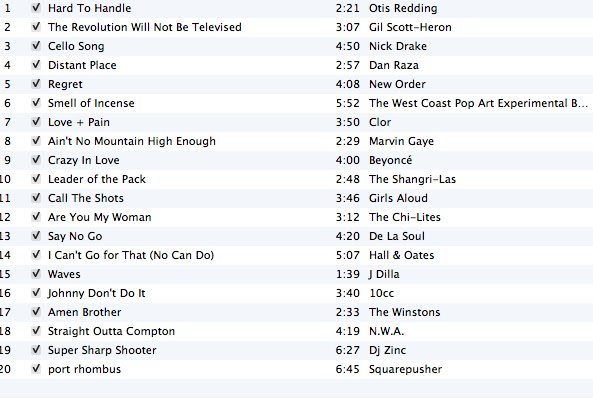Recent(ish) Innovations in Music
We looked at synthesizers, drum machines and the sampler. In the past few years, drum machines (such as the Roland 808) and the 'classic' synthesizer (such as the Moog) are in one sense becoming less common, and this is in part because we can now sample these instruments and run them from a laptop with a USB controller keyboard. The sounds that they create are arguably as popular as ever however! We also looked at sampling in the original sense, i.e. taking a section of pre-recorded music and incorporating it into your own music. We discussed the creative merit of this approach and whether it merely represented laziness or even theft. I was very interested to hear everyone's opinion on this- I think we mostly agreed that when used with imagination and creativity, making music using samples can be just as valid as using an instrument such as the guitar. For particularly good examples of sample use see the playlist or the following bootleg albums that use samples from The Beatles, Fugazi and The XX and mix them with vocals from Jay-Z, Wu Tang and Notorious BIG respectively (thanks to Jago for the XX heads up). I want to emphasise that these are not merely 'mash-ups' where an instrumental is mixed with anther vocal- rather they are well-crafted mixes using various different elements from the instrumental source tracks. Listening to the Grey Album and trying to spot the samples used from The White Album will be particularly useful in training yourself to hear music in a more analytical way. There were few things I forgot to cover this week- David mentioned that the Beyonce track actually sounds quite 'old school' for a modern R&B recording- if you listen to 'Are You My Woman' by The Chi-Lites (from the playlist) you'll see why! I also mentioned that the use of sampler instruments has made live performances much easier, in that you can carry around hundreds of instruments in one keyboard or laptop. No more using a truck to get a full sized Hammond organ to the venue! Related to this Megan asked a good question about synthesizers using samples at the end which I may have got my wires crossed about. A more complete answer is that synthesizers that are trying to emulate other instruments (such as the piano, organ etc) are usually made using samples of real sounds. However other synthesizer sounds commonly heard in dance music or even the classic Moog sound are more likely to be built from scratch. This would involve the manipulation of sine waves in various ways that are far more advance than we'll be looking at. There is always a bit of grey area with these things and to be honest this isn't something that you need to get too worried about at this stage. I hope that's relatively clear! If anyone has any questions I'll try to answer them next week or you can add comments/questions to these weekly posts.
http://grooveshark.com/#!/album/The+Grey+Album/120338
http://soundcloud.com/wugazi
http://soundcloud.com/wait-what/sets/the-notorious-xx
Playlist
Powerpoint slides



















































